China is a great destination to travel to, but do you know when the best time to visit it is? Let’s talk all about the weather in China and what to expect throughout the year.
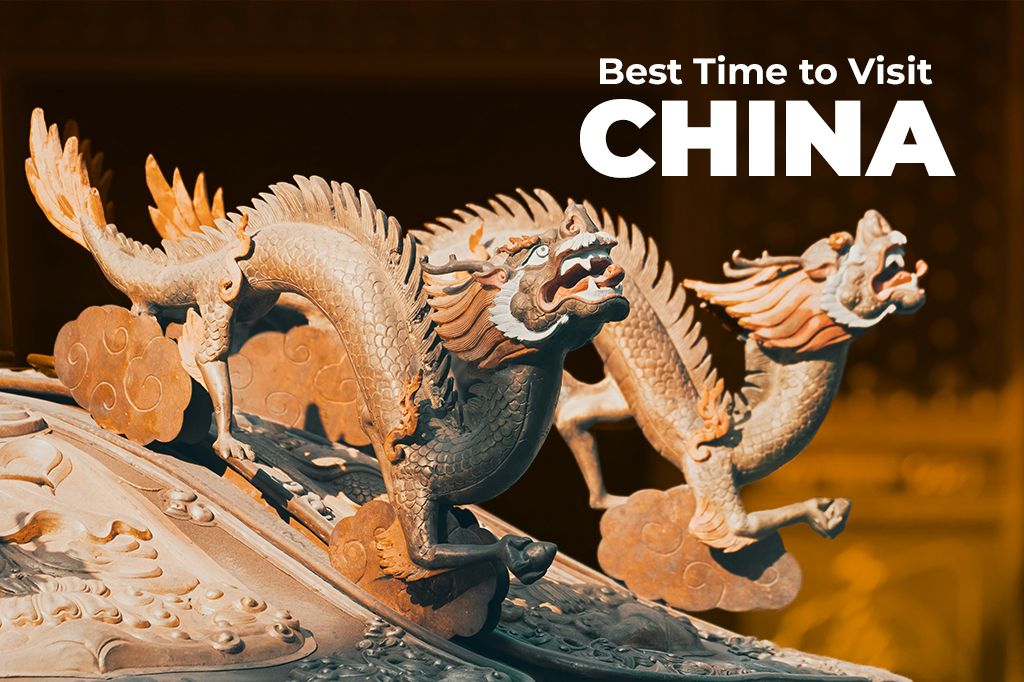
Picture by zhang kaiyv on Unsplash
No matter why you are planning a trip to China, knowing about what to expect in each season is incredibly useful. But with a country as massive as China is the matter is not as trivial as all. China is big, the biggest country on earth. It spans over 5 different time zones and over 3,000 km from North to South. To put it in perspective, it’s approximately the same distance as going from Sweden to Thailand!
And the weather, as you can imagine, is just as varied. From the Arctic-like winters in the northeast, to the tropical humidity of the south, passing through deserts and snowy mountains. With those conditions, we agree that it’s impossible to talk of a single common weather pattern across the whole nation. So let’s divide it into four regions for more simple, yet accurate, climates: Northern, Southern, Eastern, and Western.
But no matter when you finally decide to go, you can stay connected with a FREE eSIM from Yoho Mobile! Say goodbye to the skyrocketing roaming fees and hello to convenience and efficacy. Try it now and get a free eSIM.
Best Time to Visit China: A Regional Guide
Northern China
The Northern Side of the country, where cities like Beijing, Tianjin, and Hebei are, has a continental climate. Expect very cold winters, with chilling and intense winds, and really hot and humid summers full of rain. So you should avoid those seasons, even if it’s cheaper to travel there during the winter. Instead, try visiting during either Spring or Autumn.
In spring, the weather might start a bit cold in March, but it warms up little by little by the end of May. It’s perfect for exploration, as the heat and the crowds of the summer are still far. The air is dry, which sounds nice, until you realize that it’s so dry that there are occasional dust storms in the area, so keep an eye on the weather report and pack your moisturizer.
On the other hand, during Autumn, the weather is perfectly mild, with temperatures between 17-28°C, clear skies, and low humidity. There’s also the fall foliage, of course, with a continental climate comes a spectacular change in color on the landscapes. Even the air quality comes around, and it’s at its best by this time of year.
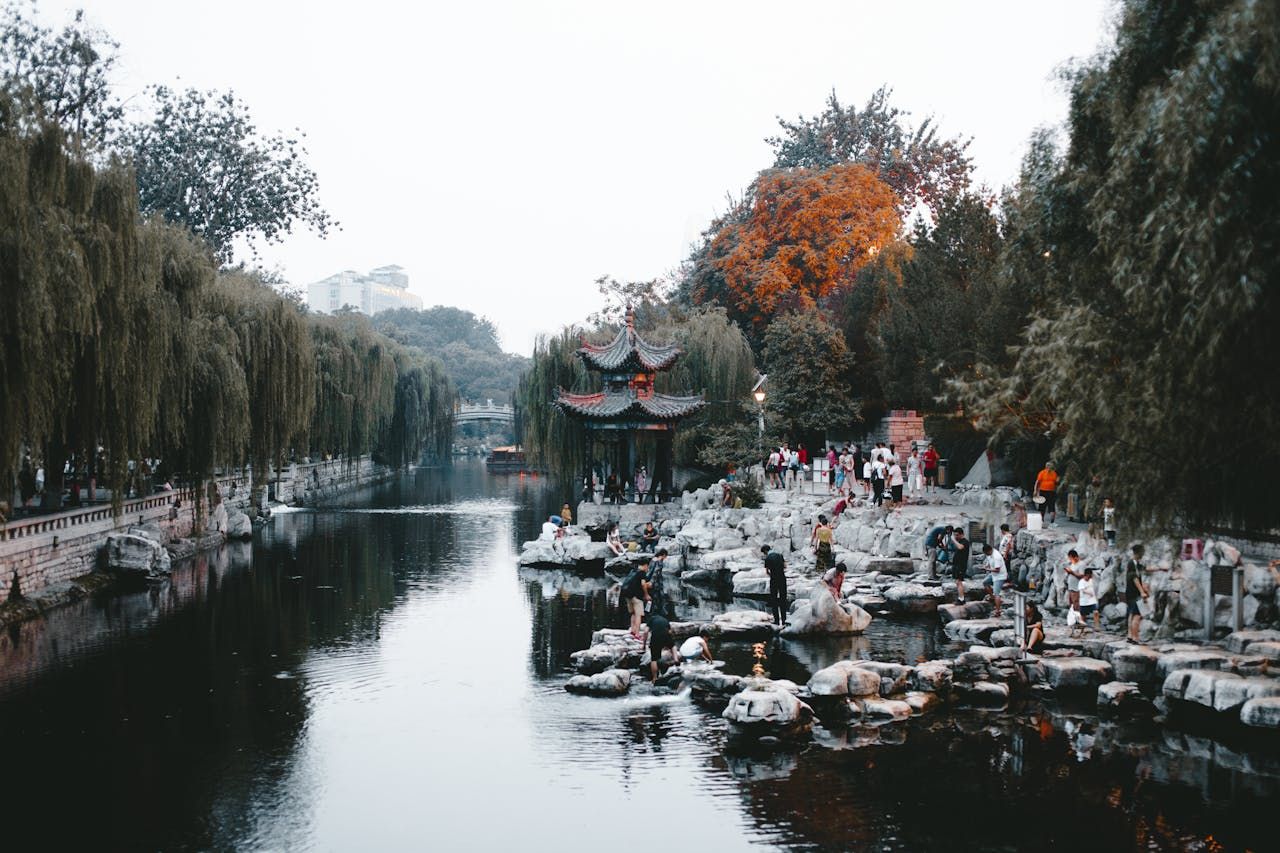
Best Places to Visit during Spring and Autumn
-
Visit Yuyuantan: Spring in Northern China means cherry blossoms, and this is the best area to see them. This scenic park has over 2,000 trees, and you can even rent a paddle boat to see them from the water.
-
Hike the Great Wall: If there’s a season when you should be visiting and hiking the Great Wall is the Autumn. The weather is perfect and crisp, and the autumnal colors make it look like an impressionist painting. For the best light, visit early morning or late afternoon.
-
Visit the Ancient City of Pingyao: In Northern China, among all the beautiful cities, there’s one that glows like a gem in Autumn, and that is Pingyao. It’s a well-preserved treasure from the Ming and Qing Dynasties, with cobbled streets, and you can visit places like the Rishengchang Bank and the Confucian Temple.
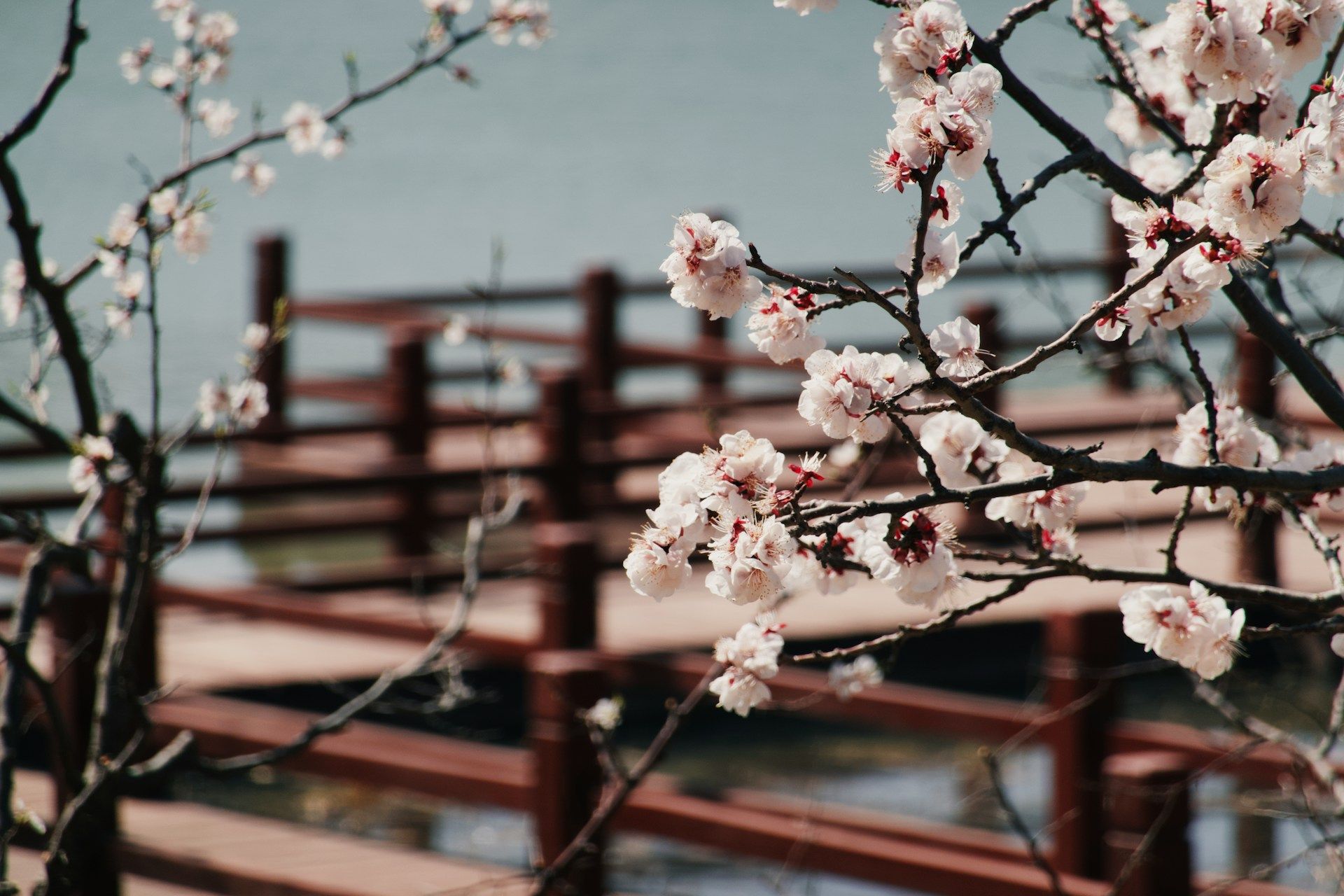
Photo by Yingjie Xiao on Unsplash
Southern China
Moving South, the Earth gets warmer, and when we arrive in the provinces of Guangdong, Guangxi, Yunnan, and Hainan, we find a subtropical and tropical climate. This means a hotter climate, but also a more humid one. We start to see more pronounced the dry and rainy season, with rains starting in spring and reaching its peak in summer, and a drier climate for autumn and fall.
The best time to visit Southern China is definitely during autumn, as the temperature is quite pleasant and the rain is infrequent. Also, the hordes of tourists have decreased considerably after the summer holidays, so you’ll get a quieter experience with better prices. On the other hand, spring, although unpredictable, is beautiful, with lots of blooming flowers, luscious greenery, and misty landscapes.
Winter is actually not that bad to visit, as it is less cold than the north, and snow is really rare. But summers are terrible, with heavy rain, constant high humidity that sticks to your skin, mosquitoes, and even typhoons!
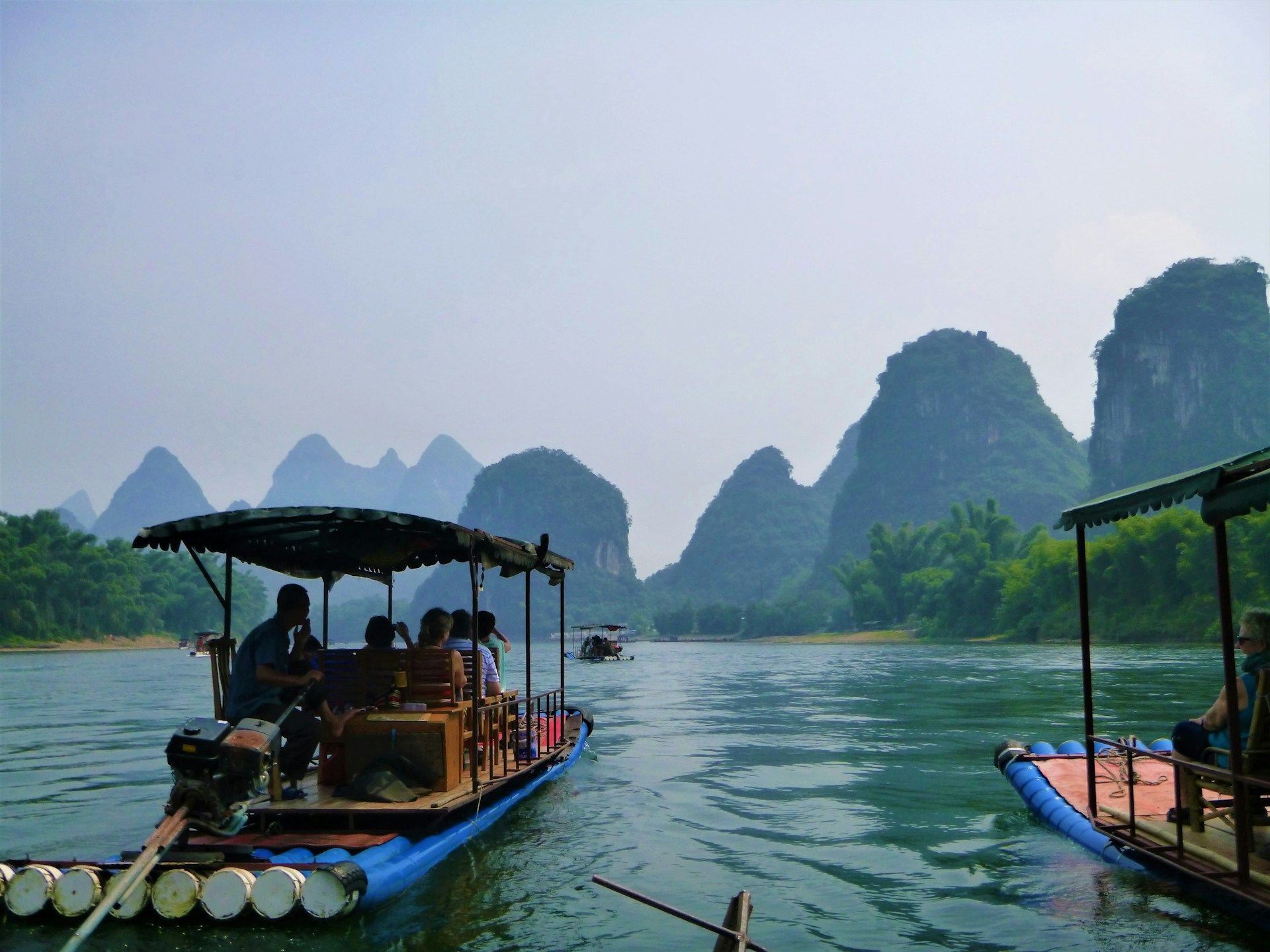
Photo by Conny Schneider on Unsplash
Best Cultural Activities during Autumn and Spring
-
Celebrate Mid-Autumn Festival: You’ve probably heard of this celebration, it’s pretty popular not only in China but in other Asian countries, and it certainly is a cultural highlight. You’ll get to eat mooncakes, make traditional lanterns, and look at the full moon in a scenic park.
-
Experience the Water-Splashing Festival: A very different tradition from the Dai people. Splashing water is not just a fun game, but it acts as a blessing and a purification ritual, bringing you good luck for the coming year. For a more spiritual experience, you can visit Local Dai Temples and see other ceremonies.
-
Enjoy the Sister’s Meal Festival: Another festival to start the year, and this one celebrates young love. It’s practiced by the Miao people, and traditionally, young women present colorful rice parcels (Sister’s Meals) to their suitors. Aside from these exchanges, there are parades, and you can eat a lot of ethnic cuisine.
Eastern China
Eastern China is quite a big region, but the climate is pretty consistent throughout. It’s mostly humid and subtropical, so it experiences four seasons very distinctly. Springs are mild, but the humidity starts to go up from March and does not decrease until autumn. Summers are hot and rainy, and the winters are cold and damp, but snow is pretty rare.
The best season to travel is autumn, with a dry and mild climate, perfect for excursions and exploration. The air is crisp, the sky is blue, and the earth is yellow everywhere, in the mountains in Huangshan and the rice paddies. Spring is the second-best season with beautiful gardens and moderate weather. It is more rainy, especially after April.
Like other areas in China, summer is hot and humid, with temperatures staying consistently between 35-37°C. And if you’ve ever traveled to anywhere humid, you know the feeling is not pleasant at all. So cities like Shanghai and Hangzhou can feel oppressive at this time of year. The winter weather is not really that unpleasant, as it’s not particularly cold, but the landscapes can get a bit depressing. The skies are gray and dull, trees have lost all of their leaves, and there’s no snow.
Best Standout Activities in Eastern China for Spring and Autumn
-
Explore the Classical Gardens of Suzhou: A perfect activity for the spring, when the whole gardens come alive and blossom. Everywhere you see, there are magnolias, peonies, cherries, and wisterias. And the gardens were designed for this very season, as they symbolized the renewal and harmony of nature.
-
Hike the Yellow Mountains: The perfect activity for an autumnal day, just get on your boots and let’s immerse in the beautiful colors. You can take a cable car to reach the Eastern Steps trail, and from there explore the Bright Summit and the Lotus Peak.
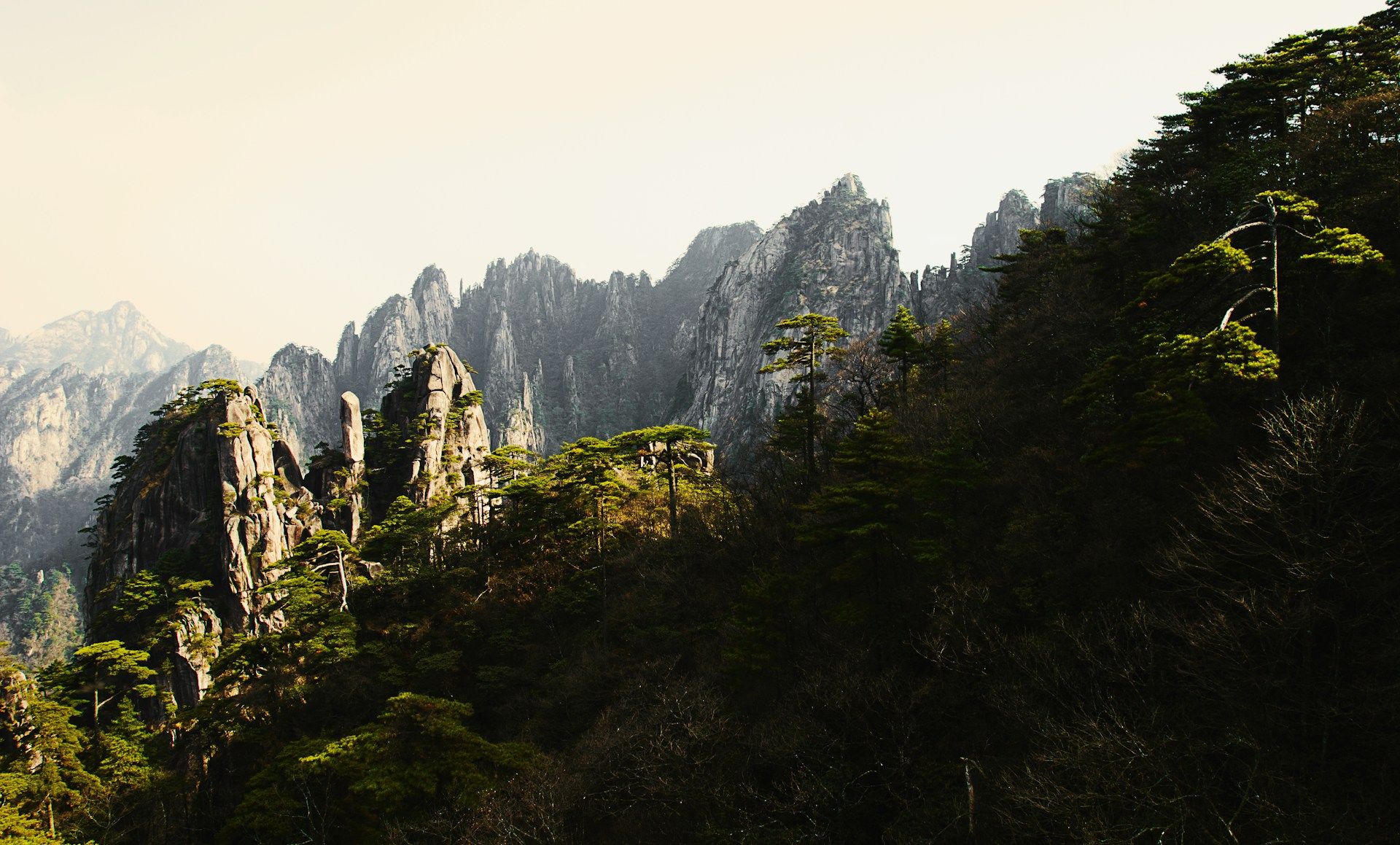
Photo by Daniel Höhe on Unsplash
Western China
The most varied geographically, as there are mountains, deserts, steppes, and high altitude plateaus, so expect a varied weather as well. In general tends to be dry, cold, and windy, even during the summer, especially in areas like Qinghai and Tibet. Only in Xinjiang do you find hot summers, but the weather is still very dry and arid.
The best season to visit is spring although a bit cooler than other areas of China, you’ll find steady and warm temperatures without the crowds of summer. Although it is quite dusty in areas like Xinjiang, and if you’re traveling to the mountains, you can find some mountain passes still blocked by snow. Autumn is also great, especially in high-altitude places like Tibet and Qinghai, where the air is dry and the sky is so blue it hurts the eyes.
Be more cautious if you’re visiting during the summer, especially in the deserts. For, as deserts go, the temperatures can easily reach over 40°C during the day. On the mountains, it is still cold and nice, but because of the peak of domestic flights, it can be more expensive. And finally, winter, it’s not as worth it. In most areas is extremely cold, with areas like Urumqi and Lhasa dropping to -20°C, and it’s common for the roads to get closed in the mountain regions.
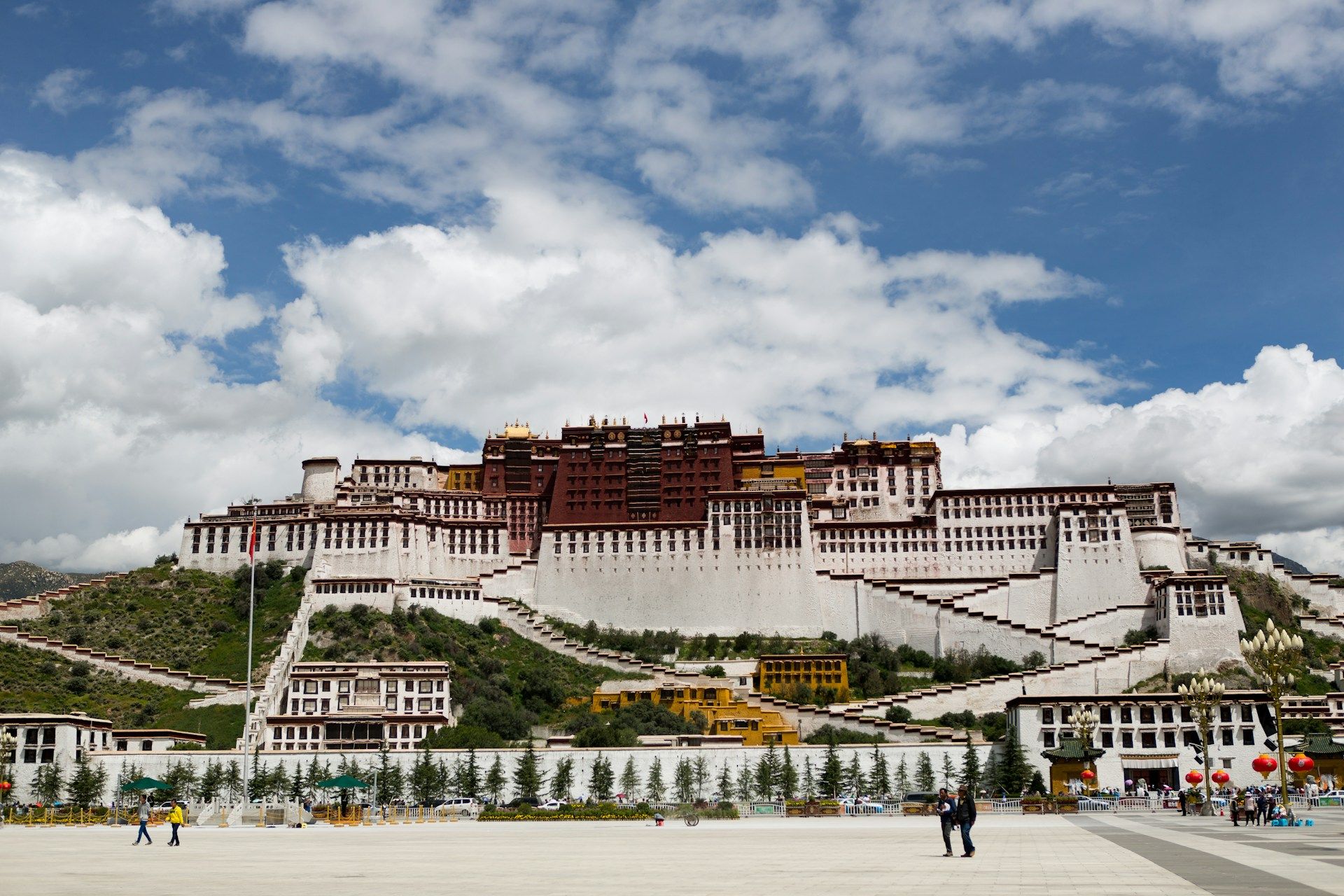
Photo by Raimond Klavins on Unsplash
Best Things to Do During Spring and Autumn
-
Trek the Tibetan Plateau: It can be the best adventure of your life, but keep in mind that it is not an easy task. The Tibetan Plateau has an altitude of 3,000 to 4,500 meters, so you’ll need to be easier on yourself. You can choose a route like Litang-Ganzi to combine monastery visits, with 1-day ridge hikes, so you don’t spend the night under the stars.
-
Explore the Silk Road in Gansu: Spring is a great time to travel and explore, and in Western China, you have the fascinating Silk Road. Popular activities in this route include visits to the Mogao Caves, where you can see Buddhist murals from 1,600 years ago, and riding a camel through the singing sand dunes in Dunhuang.
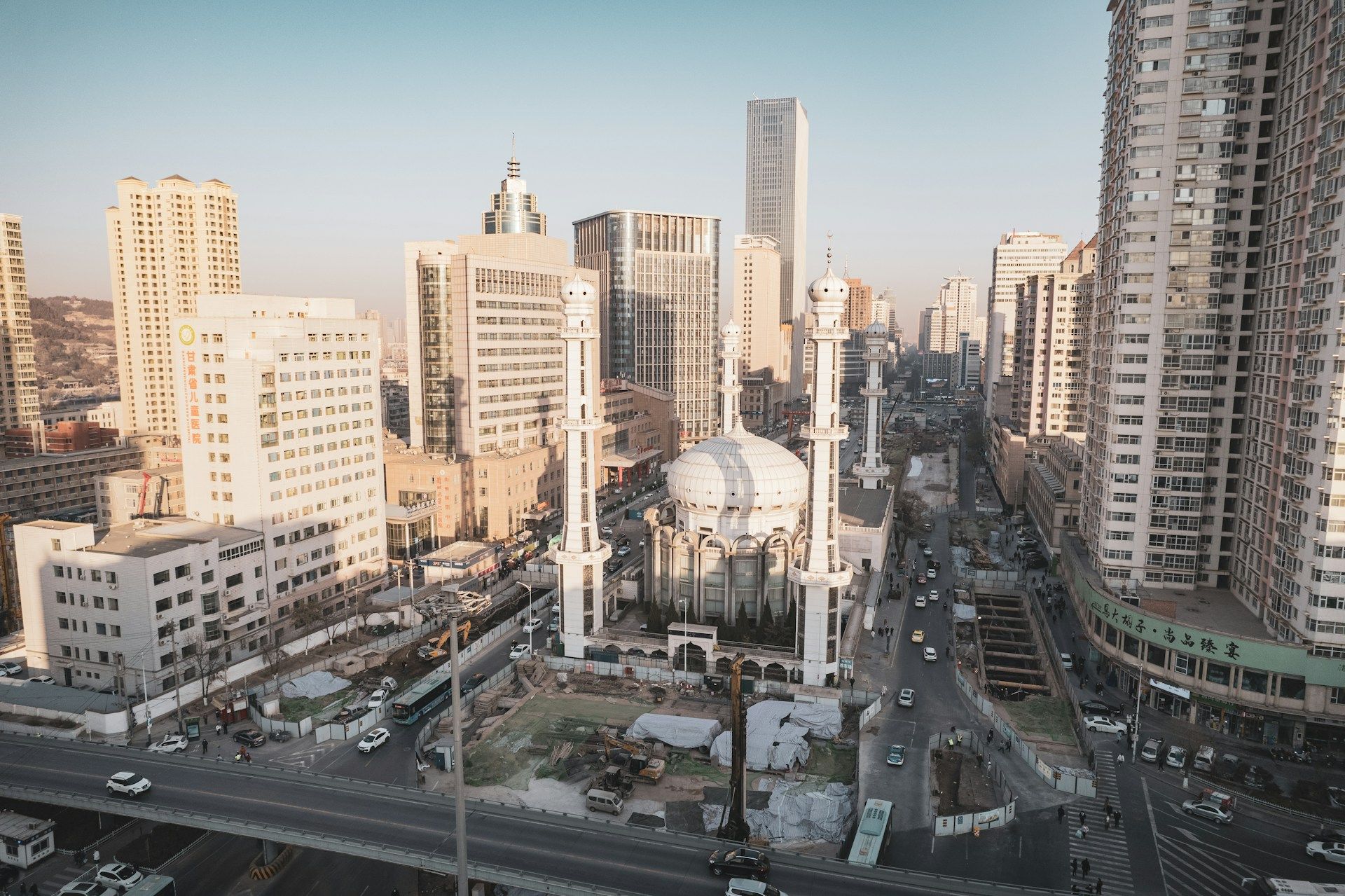
FAQs about China’s climate
National Holidays, are they worth it?
The simple answer is that it depends on you. Traveling during the Holidays can be quite complicated. On one hand, they are incredible rich experiences that attract lots of tourists interested in the local culture. On the other this increased in tourism means that the prices are considerably higher. Times like the Golden Week (October 1-7) can be really intense. If you really want to join the festivities, you can always choose less crowded places, and, as a plus, you’ll get a more authentic experience.
When is the best time to visit for food lovers?
China has great food year-round, but it does have seasonal specialties that are unique and impossible to find anywhere else in the world.
-
Spring: You can try lots of dishes made with fresh greens and bamboo shoots. In Chengdu, you can eat spicy spring vegetables mixed with chili oil in any street market, and in Guangzhou, you get dim sum with seasonal fillings.
-
Summer: Ideal for cool dishes, fresh seafood, and night market snacks. Try the sweet and sour seafood in Taipei, or the spicy, cool noodles in Chongqing.
-
Autumn: The harvest season brings a lot of dishes, like hairy crab and mooncakes in Shanghai, to the wild mushrooms and earthy dishes in Yunnan.
-
Winter: The best season for hotpot and dumplings. In Chengdu, for example, you can try the fiery and spicy hotpot to brave the cold, or the fresh dumplings in Harbin.
So, when is the best time to visit China?
As you could see, even when the weather and temperatures range greatly, the best seasons are almost always spring and autumn. With few exceptions, the Chinese summers are hot and humid, and both international and domestic flights are overcrowded and expensive. Winter can be interesting, but it certainly is cold, especially in the north of the country.
